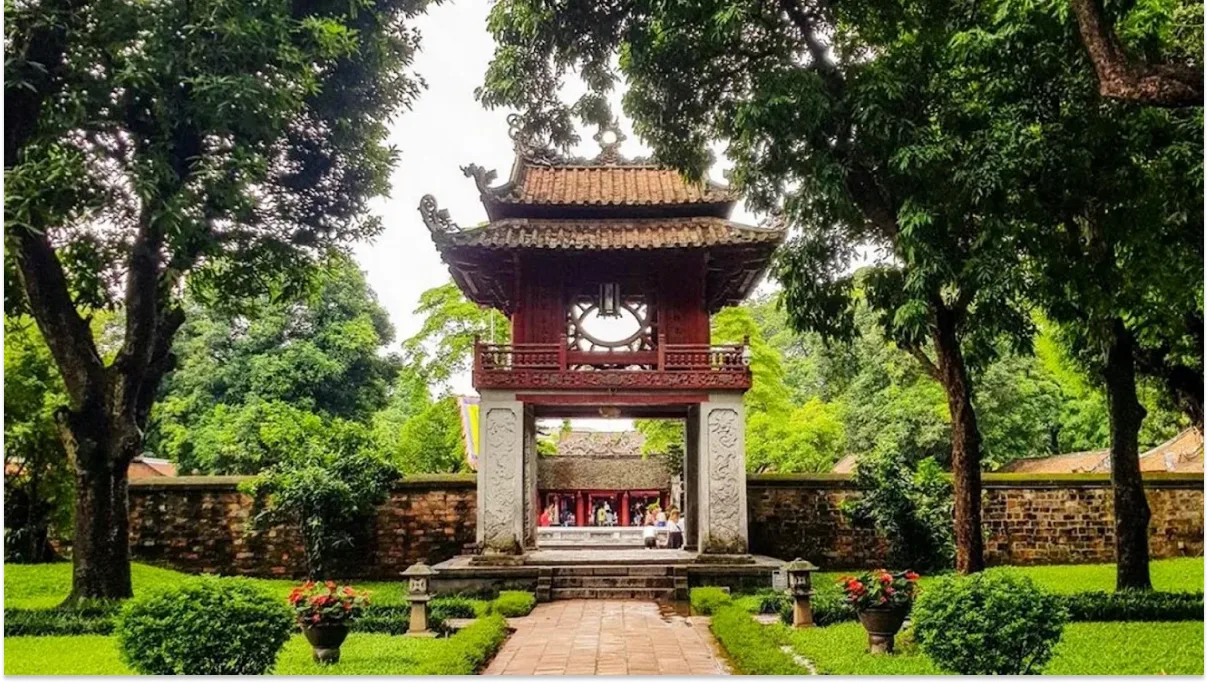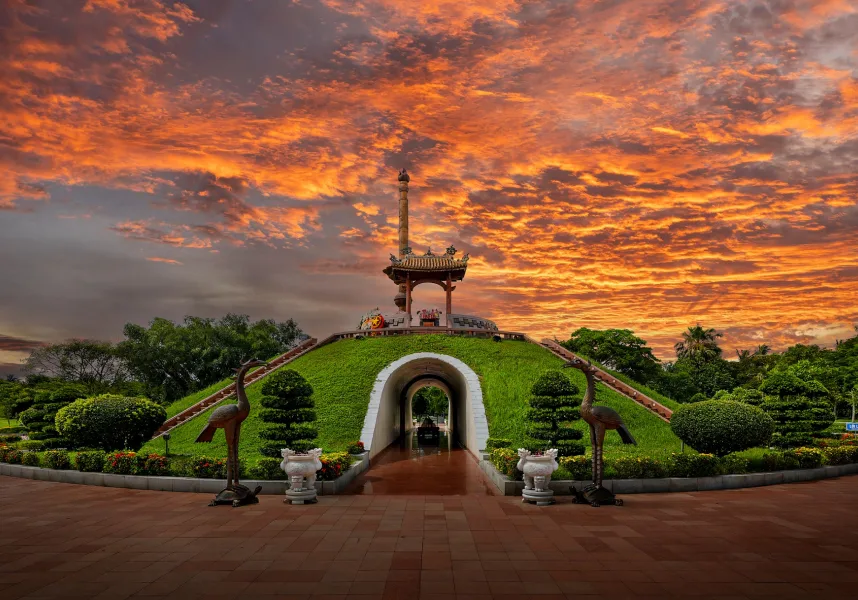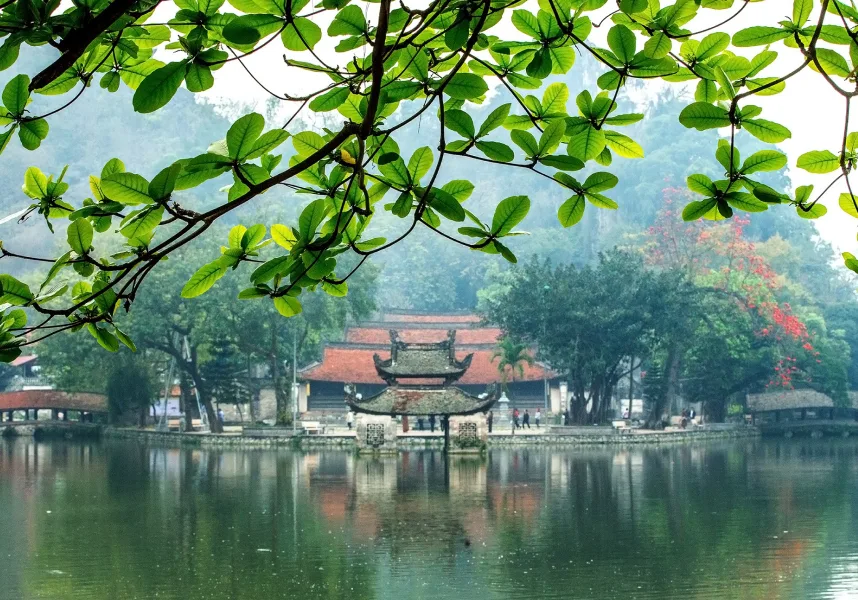
🏯 Temple of Literature: A Journey Through Vietnam’s 1,000-Year-Old University
Hanoi is not only a bustling capital with lively streets but also a city where Vietnam’s deep cultural and intellectual heritage thrives. Among its historical gems, the Temple of Literature – Quoc Tu Giam, established in 1070, stands as Vietnam’s first national university. This ancient complex preserves the essence of Vietnamese education, philosophy, and art.
As I walked through its gates, I felt like stepping back in time — into an era of scholars, Confucian values, and royal wisdom that shaped generations.
🏮 1. The Journey to the Temple of Literature
Explore the Temple of Literature – Vietnam’s First University in Hanoi >>
I arrived early in the morning, when the sunlight filtered softly through rows of ancient trees. Passing through the grand main gate, the noise of the city faded away, replaced by an almost sacred calm.
From the very first step, I felt a deep sense of reverence — a quiet atmosphere that contrasted sharply with Hanoi’s vibrant streets. The gentle sound of footsteps on old bricks mixed with birdsong, creating a serene, scholarly rhythm.
🏛️ 2. Exploring the Architecture and Grounds
The Temple of Literature is divided into several courtyards: the Great Middle Gate (Dai Trung Mon), the Khue Van Pavilion, the Well of Heavenly Clarity, and the Stelae of Doctors, each holding centuries of meaning.
Khue Van Pavilion: Standing proudly at the center, this iconic structure represents wisdom and enlightenment. The sunlight streaming through its wooden lattice windows illuminated intricate carvings that seemed to whisper the stories of scholars from a thousand years ago.
Well of Heavenly Clarity (Thien Quang Tinh): A tranquil pond surrounded by ancient trees. Sitting on a stone bench nearby, I watched model boats drift and birds circle above — a peaceful scene frozen in time.
Doctor Stelae: 82 stone tablets engraved with the names of scholars who passed royal examinations under the Le and Nguyen dynasties. Walking among them, I imagined generations of students who dedicated their lives to learning and honor.
Each brick pathway felt like a timeline of Vietnam’s intellectual past — a place where architecture and academic spirit intertwine beautifully.
🎓 3. Joining a Guided Tour
To gain a deeper understanding, I joined a guided tour. Our guide passionately shared the stories of ancient exams and scholars who once studied here — those who passed the royal exams known as Thi Huong, Thi Hoi, and Thi Dinh.
I was amazed to learn that some stelae still bear the names of scholars from hundreds of years ago. Touching the ancient carvings felt like connecting directly with history — with the noble pursuit of knowledge and virtue that defined early Vietnamese education.
🌸 4. More Experiences Around the Temple
📸 Capture the Beauty:: Every corner of the Temple of Literature — from moss-covered walls to the tiled roofs and old trees — offers a perfect frame for photography. The morning and golden-hour light make it even more magical.
☕ Enjoy Local Coffee & Tea:: Right outside the temple, small cafes serve lotus tea and traditional Vietnamese coffee. Sitting there, sipping slowly while watching students and travelers pass by, I felt both peaceful and connected to the city’s pulse.
🎁 Souvenir Shopping:: Nearby stalls sell books, calligraphy brushes, paintings, and models of the Khue Van Pavilion — perfect keepsakes that carry the spirit of learning.
I bought a small notebook with traditional calligraphy. Holding it, I felt as if I had taken home a piece of Vietnam’s wisdom — something to inspire thought and creativity long after my visit.
💡 5. Travel Tips
Best Time to Visit: Early morning or late afternoon for cooler weather and fewer crowds.
Dress Code: Respectful and modest; wear comfortable shoes for walking.
Guided Tour: Highly recommended to appreciate the historical and cultural depth.
Bring a Camera: The temple offers countless picturesque angles for photography.
Time Needed: Around 2–3 hours to explore fully.
Respect the Space: Keep noise to a minimum — this is not just a tourist site but a cultural sanctuary.
Conclusion
Visiting the Temple of Literature – Quoc Tu Giam is far more than a cultural tour; it’s a journey through the history of Vietnamese education and the enduring respect for knowledge.
I left the temple feeling thoughtful and inspired — as if the quiet spirit of scholars from centuries ago still lingered among the ancient courtyards. The lessons of humility, wisdom, and dedication they left behind continue to echo in modern Vietnam, reminding us that learning is a lifelong pursuit and a bridge across generations.



Comments (0)